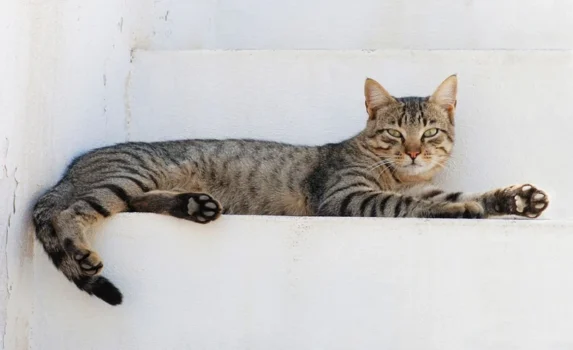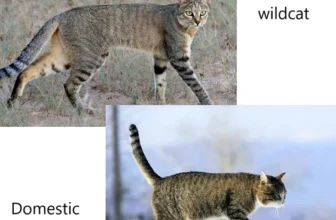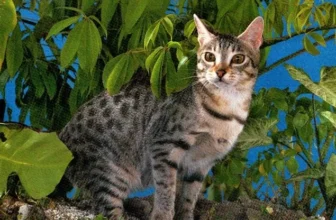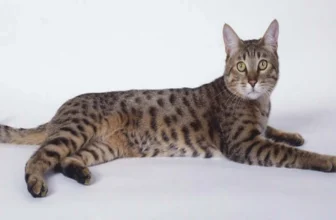It’s hard not to be instantly charmed by the striking and unique appearance of California Spangled Cats. With their leopard-like spots and sleek build, it’s no wonder why they captured the hearts of many in the 1980s. But what caused the California Spangled Cat to become such a popular breed during this decade? Was it simply their alluring aesthetics or was there something more? In this article, we will examine the social and cultural factors that contributed to the rise and fall of the California Spangled Cat’s popularity, as well as their lasting legacy in the world of feline breeding.
Overview of California Spangled Cats
The California Spangled Cat is a breed that has gained notoriety due to its distinctive look and interesting history. The breed originated in the late 1970s in Los Angeles, California. It was the brainchild of Hollywood script writer Paul Casey, who had a vision of creating a domestic cat that resembled a wild leopard. After much crossbreeding of different cat breeds, the California Spangled Cat was born.
The California Spangled Cat was a medium to large-sized breed, with short, smooth fur and leopard-like spots in various shades of brown, gold, and black. They had a muscular build, elongated necks and legs, and tufted ears. Despite their wild appearance, they were known to be affectionate and loving pets.
There were only a few hundred California Spangled Cats ever bred due to their high cost and rarity. The breed gained popularity quickly, but unfortunately, their time in the spotlight was short-lived. In the mid-1980s, the popularity of the California Spangled Cat began to wane, and the breed eventually disappeared from public view.
Despite their short run of popularity, the California Spangled Cat left a mark on cat breeding that is still felt today. Although no longer bred, their distinct appearance and unique history continue to fascinate cat lovers around the world. Their story serves as a reminder that even the rarest of breeds can have a lasting impact on the world of cat breeding.
To learn more about the rise and fall of the California Spangled Cat, check out this article, or to read about their legacy and impact on modern breeding, check out this article.
The Popularity of Exotic Breeds in the 1980s
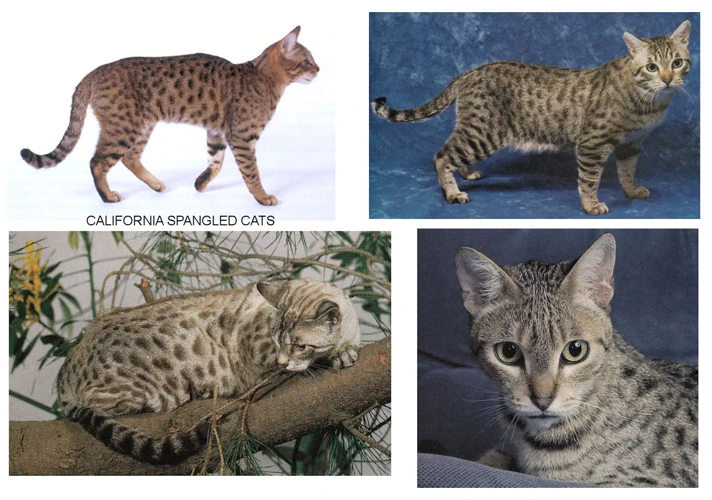
During the 1980s, exotic cat breeds were gaining popularity among cat owners. These cats were seen as a symbol of status and luxury. The California Spangled Cat was one of the exotic breeds that drew attention from cat enthusiasts. The unique spots on their fur, coupled with their wildcat appearance, captivated the public.
One factor that played a significant role in promoting the popularity of exotic breeds, including the California Spangled Cat, was the influence of the fashion industry. Fashion icons and designers were often seen posing with exotic cats as accessories in their photoshoots. The perception that exotic cats were fashionable spread like wildfire. The media picked up on this trend and helped create a cultural obsession with exotic cat breeds.
The rise of the Yuppie culture in the 1980s also contributed to the popularity of exotic cat breeds. Yuppie culture was characterized by a desire for luxury goods, upward mobility, and an abundance of disposable income. The California Spangled Cat was seen as a luxury item that complemented the lifestyle of Yuppies. This breed was expensive, and its acquisition was a way for Yuppies to showcase their wealth.
The 1980s were a time when people embraced the idea of indulging in their passions, and owning exotic cat breeds was one way to do that. The California Spangled Cat was seen as a symbol of luxury and served as a status symbol for cat enthusiasts, especially for fashion-conscious Yuppies.
In the next section, we will explore how Hollywood played a role in promoting exotic cat breeds like the California Spangled Cat.
The Influence of the Fashion Industry
In the 1980s, the California Spangled Cat became a popular breed among fashion enthusiasts and designers. This exotic breed was renowned for its striking leopard-like appearance and fur patterns that resembled the hides of wild felines. Their unique looks made them a fashion icon and inspired the creation of clothing and accessories that took inspiration from their pattern.
Fashion designers, such as Dolce & Gabbana, used California Spangled Cats in their photo shoots, and the breed even graced the pages of Vogue magazine. These appearances helped to cement California Spangled Cats’ status as the “it” cat of the fashion world.
The trend even extended to the general public, with fashion-conscious individuals seeking to emulate the glamour and sophistication associated with the California Spangled Cat. The breed’s sleek, striking appearance was seen as the embodiment of high fashion and luxury, causing its popularity to soar.
However, this trend was not to last, as the fashion industry moved on to newer fads, leaving the California Spangled Cat breed to fall into obscurity. The cat’s popularity declined, and it became increasingly difficult to find these rare, exotic felines.
To learn more about the decline of the California Spangled Cats, read our article on the business decline of California Spangled Cats. And, to learn more about the evolution of cat breeding, check out our article on the evolution of cat breeding and California Spangled Cats.
The Rise of the Yuppies
During the 1980s, there was a significant rise in the number of young urban professionals, or “yuppies,” who were living in large cities like New York and Los Angeles. This demographic group was characterized by their high income, materialistic tendencies, and desire for status symbols. As a result, the California Spangled Cat became a popular pet choice among yuppies due to its unique and exotic appearance.
Yuppies were often drawn to the spangled coat pattern of the California Spangled Cat, which resembled that of a wild leopard or ocelot. The cats also had striking green eyes and sleek, muscular bodies that conveyed a sense of power and sophistication. These physical features made the California Spangled Cat a coveted accessory for yuppies who sought to display their wealth and taste.
In addition to their appearance, California Spangled Cats were known for their active and playful personalities. Yuppies who lived in small apartments in the city found that the cats were well-suited to their lifestyle, as they could entertain themselves and did not require a lot of space or attention. The cats were also seen as a reflection of their owners’ contemporary and hip sensibilities, further cementing their popularity among yuppies.
The rise of the yuppie culture in the 1980s played a significant role in the popularity of the California Spangled Cat. The cats represented a desirable combination of exoticism, luxury, and practicality that appealed to this demographic group. While the yuppie trend eventually faded, the legacy of the California Spangled Cat as a status symbol lives on.
The Role of Hollywood
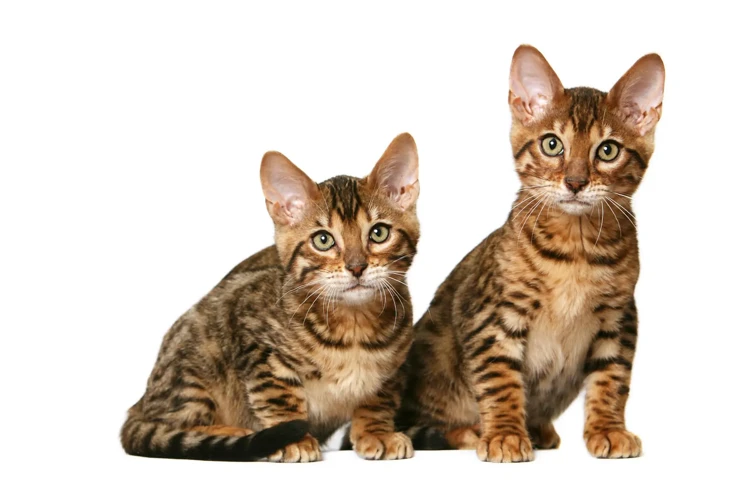
In the 1980s, Hollywood had a significant influence on pet ownership and the California Spangled Cat breed. Cats in general, and especially exotic breeds, became popular among celebrities and the general public alike. This played a crucial role in the popularity and consequent rise of California Spangled cats.
Cats in Pop Culture: The 1980s saw a boom in cat-related content on TV and in movies, with several famous feline characters like Garfield, Tom, and Felix gaining a following. Additionally, music videos like Michael Jackson’s “Black or White” and Paula Abdul’s “Opposites Attract” featured cats, making them even more appealing to the general public. The presence of cats in popular culture made people more interested in cat ownership and, consequently, popular cat breeds like the California Spangled cat.
The Celebrity Feline Connection: Throughout the 1980s, several high-profile celebrity figures embraced owning exotic cat breeds, including the California Spangled Cat. Famous faces like Barbra Streisand, Anthony Perkins, and Candice Bergen all owned California Spangled cats, which then received increased media attention and sparked public interest in the breed. The Hollywood connection was so strong that California Spangled cats became known as the “movie star cats” among breeders and enthusiasts.
The combination of the unique and exotic appearance of the California Spangled cats and their celebrity endorsements made them even more appealing to the general public. This resulted in a surge of popularity for the California Spangled cat breed, surpassing other exotic breeds in the market. Even today, the impact of Hollywood can be seen with celebrities, such as Taylor Swift, owning and posting pictures of their California Spangled cats on social media.
Cats in Pop Culture
Cats have been a big part of pop culture for many years. From cartoons to movies, cats have played a variety of roles in entertainment. In the 1980s, California Spangled Cats made their way into pop culture as well. These beautiful cats with their unique coat patterns and striking appearance caught the attention of cat lovers and non-cat lovers alike. They became a favorite of many TV shows, movies, and even music videos.
One of the most famous examples of a California Spangled Cat in pop culture is the 1986 thriller “The New Adventures of Pippi Longstocking.” In this movie, a California Spangled Cat named “Alfonso” played the role of “Mr. Nilsson,” Pippi’s mischievous pet monkey. The cat’s playful and mischievous demeanor brought the character to life and made him a fan favorite.
The 1980s also saw the rise of music videos, and California Spangled Cats made an appearance in several of them. In the “Opposites Attract” music video by Paula Abdul, the singer is seen dancing with a California Spangled Cat. The cat’s unique appearance and playful demeanor added to the overall appeal of the video.
The California Spangled Cat also made appearances in popular TV shows of the time, including “Moonlighting” and “Dynasty.” In “Moonlighting,” a California Spangled Cat named “Agnes” played a recurring role as the pet of Maddie Hayes, played by Cybill Shepherd. The cat’s presence added to the show’s humor and charm. In “Dynasty,” a California Spangled Cat named “Kumar” played the role of the Carrington family’s beloved pet. The cat’s stunning appearance and playful demeanor were perfectly suited for the glamour and drama of the show.
The California Spangled Cat’s appearance in pop culture helped to increase their popularity and raise awareness of the breed. They became more than just a pet; they were a status symbol and a cultural icon of the time. Their contribution to pop culture in the 1980s has undoubtedly helped to ensure their legacy and continued popularity among cat enthusiasts today.
The Celebrity Feline Connection
It’s no secret that celebrities have played a major role in popularizing certain cat breeds throughout history, and the California Spangled Cat was no exception. Boasting a wild and exotic appearance, these cats quickly caught the attention of several high-profile individuals in the entertainment industry, including fashion designer Ralph Lauren and actress Kim Basinger.
In fact, Lauren’s “Witness Protection” ad campaign in the 1980s prominently featured a California Spangled Cat, introducing the breed to a much wider audience. Basinger was also a vocal advocate for the breed and was even rumored to have owned a few California Spangled Cats herself.
It’s no surprise that these influential figures helped further increase demand for the breed. People wanted to own the same type of cat as their favorite stars. The widespread exposure helped establish the California Spangled Cat as a highly sought-after feline companion among the upper echelons of society.
However, as the decade went on, the novelty of exotic breeds started to fade, and the California Spangled Cat eventually fell out of favor. Nevertheless, its unique appearance and the influence of celebrity admirers helped cement its place in feline history.
The Environmental Movement and Preservation of the California Spangled Cat Breed

During the 1980s, the environmental movement gained significant relevance in society, and people started becoming more conscious about preserving the planet’s biodiversity. This movement coincided with the inception of the California Spangled Cat breed, which was bred to resemble wild cats and prevent people from hunting them. The breeders of the California Spangled Cat aimed to promote the conservation of the wildcats that inspired their creation.
The unique spotted and sleek appearance of California Spangled Cats made them highly sought-after. Nevertheless, their breeders encouraged adopting them from shelters or rescue organizations instead of purchasing them from breeders to reduce demand pressure. Despite this, their popularity continued to grow, leading more people to breed them and produce more kittens for sale. This sparked an ethical debate about keeping cats as pets, and some animal rights activists even called for their domestication to end.
The environmental movement’s ideals also spread through the art scene, with many artists portraying the California Spangled Cat as a symbol of conservation in their artworks. This way, the breed became more than just a household pet but an icon for the environmental movement.
As the California Spangled Cat was highly associated with conservation, it made the breeders put a lot of effort into preserving the breed. These breeders didn’t breed rats, mice, or wildcats with their California Spangled Cats to avoid diluting their genetic composition. Many breeders maintained strict breeding protocols to emphasize the breed’s unique qualities and avoid inbreeding, which would have resulted in genetic abnormalities.
Today, the California Spangled Cat is no longer available for breeding. However, breed enthusiasts continue to maintain the existing breed lines to ensure their preservation, and some organizations even promote the California Spangled Cat as a symbol of environmentally conscious pet ownership.
The California Spangled Cat was a unique feline breed that was bred to promote conservation and prevent people from hunting wild cats. The breed’s efforts to conserve wild felines, coupled with the environmental movement, boosted the California Spangled Cat’s popularity. The breed became a symbol of preservation and environmentally conscious pet ownership. Even though the breed is no longer available for breeding, its impact on society has been significant, and its legacy continues to inspire and influence the cat breeding industry.
Disappearance of California Spangled Cats from the Public Eye
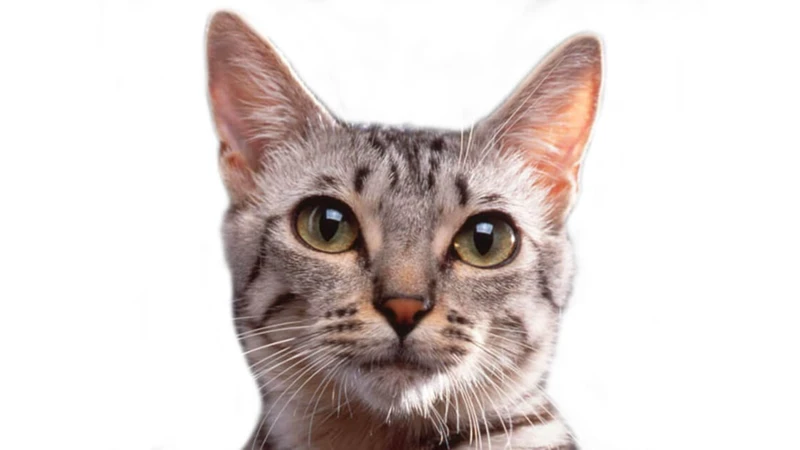
Throughout the 1980s, California Spangled Cats gained popularity as a unique and exotic breed, but by the end of the decade, these cats seemed to have disappeared from the public eye. This sudden disappearance left many cat enthusiasts perplexed and wondering what had caused it.
Supply and Demand: One factor that contributed to the disappearance of California Spangled Cats was supply and demand. As the breed gained popularity, demand for these cats increased. However, their breeding was difficult and they had a low kitten production rate. Breeders struggled to keep up with demand and often resorted to inbreeding, which led to health problems in the cats. Ultimately, the high cost and limited availability of California Spangled Cats made them a rare find.
Marketing and Sales: Another factor that contributed to the disappearance of California Spangled Cats was marketing and sales. While the breed gained popularity in the 1980s, it was never marketed as a long-term pet, which led to a lack of sustained interest. Many people who purchased California Spangled Cats realized that they were not the easy-to-care-for pets they had initially thought, which led to many of these cats being abandoned or returned to breeders. The high price tag of California Spangled Cats also deterred many potential owners.
Despite the disappearance of California Spangled Cats from the public eye, the breed remains a beloved and iconic part of feline history. While they may not be as prevalent as they were in the 1980s, they have left a lasting cultural legacy.
Supply and Demand
During the 1980s, the California Spangled cat was a highly sought-after breed due to its unique appearance and association with the Hollywood elite. As a result, the demand for this breed exceeded the available supply, leading to a sharp increase in its price. The high price was a result of the limited number of breeders who were working with this breed, as well as the high cost of breeding and maintaining the cats.
The California Spangled cat was not a mainstream breed and thus, its availability was limited. This exclusivity added to the appeal of the breed, as it gave owners a sense of prestige and status. At the same time, it caused frustration among those who wanted to own a California Spangled cat but could not find one. This frustration was only compounded by the fact that it was difficult to import the breed from other countries due to strict quarantine laws.
With the high demand for California Spangled cats, some breeders tried to meet this demand by producing more kittens. However, the breeding process for this breed was time-consuming and costly, requiring careful selection of breeding pairs and extensive medical screening. Unlike other breeds, the California Spangled cat could not be interbred with other breeds, which made it challenging to produce large litters.
Despite its popularity, the California Spangled cat was not able to sustain its success. The breeding process was challenging, and the high cost of production made it difficult for breeders to keep up with the demand. As the breed became less available, its popularity began to wane. Ultimately, the California Spangled cat disappeared from the public eye. The breed is now considered to be rare and is not widely available in the market.
The limited supply and high demand for the California Spangled cat during the 1980s are a testament to its popularity and exclusivity. However, this demand also led to its downfall, as the breed could not sustain the high cost of production. Today, the California Spangled cat is recognized as a rare breed, and its legacy lives on as a symbol of the 1980s’ obsession with exotic and unique pet breeds.
Marketing and Sales
During the 1980s, marketing and sales played a crucial role in the popularity of California Spangled cats. The breed was marketed as exotic and high-end, with a price tag of around $800, making it one of the most expensive cat breeds at the time. The marketing emphasized their unique and wild appearance, comparing them to wildcats and leopards.
The limited supply of California Spangled cats also contributed to their high price and desirability. Breeders intentionally kept the breed small in order to maintain its rarity, leading to a waiting list for interested buyers.
The California Spangled Cat was also marketed as a status symbol, appealing to the wealthy and fashionable crowd who were willing to spend big for a unique pet. The breed’s high price-tag and exclusivity added to its appeal, with many owners considering it a statement of power and status.
In addition to marketing, sales played a crucial role in the popularity of California Spangled cats. Breeders and pet stores offered financing options to buyers, making it easier for them to afford a cat that otherwise would have been out of reach. The demand was so high that some breeders even started mass-producing similar-looking cats, diluting the breed’s unique characteristics.
Despite their high price and exclusivity, California Spangled cats quickly became a status symbol, with everyone from Hollywood celebrities to wealthy cat enthusiasts eager to own one. Their image of luxury and rarity propelled them to the forefront of the cat breeding industry in the 1980s.
However, the breed’s popularity was short-lived, and by the end of the decade, the California Spangled Cat was no longer in demand. The reasons for their downfall are varied – some attribute it to oversupply of similar-looking cats, while others cite their high price as a deterrent for potential buyers. Whatever the reason, their brief moment of fame has left a lasting impact on the cat breeding industry and continues to be a subject of fascination for cat lovers.
Cultural Impact and Legacy of the California Spangled Cat
The California Spangled Cat had a significant cultural impact during its short-lived popularity in the 1980s, leaving a lasting legacy on cat breeding and animal rights activism. The unique design and wild appeal of the breed were undeniable, and this has had a continued influence on cat breeding practices.
Endangered Animals and Animal Rights Activism
As the California Spangled Cat faced extinction in the 1980s, animal rights activism began to coalesce around the breed. Activists argued that the pressure to continuously breed the cats for the sake of their distinctive appearance was senseless and that ethical breeding practices must be established to protect endangered animals. The plight of the California Spangled Cat highlighted the need for humane treatment of all animals, and as a result, animal rights activism received a boost in public awareness.
The breed’s exotic appeal also drew attention to the growing concern over the conservation of endangered species. The California Spangled Cat became a symbol for the protection of wild animals and their preservation for future generations.
Continued Popularity and Influence on Cat Breeding
Although the California Spangled Cat lost its popularity in the 1990s, its legacy continued. The breed’s unique characteristics, including their sleek and spotted coats, have inspired breeders to create new exotic breeds.
The popularity of the California Spangled Cat also influenced the rise of ethical cat breeding. As a result of the animal rights activism around the breed, breeding standards were revised, and a code of ethics was established to protect the health and well-being of all cats. Today, cat breeds are often judged less on their appearance and more on their health to ensure breed preservation and the animal’s quality of life.
The California Spangled Cat’s popularity in the 1980s had a lasting impact on cat breeding and animal rights activism. The breed’s unique design and wild appeal captured the public imagination and raised awareness of the need for humane treatment and conservation of endangered animals. The California Spangled Cat will forever remain a symbol of the importance of ethical breeding, animal welfare, and why we need to protect all wildlife.
Endangered Animals and Animal Rights Activism
The California Spangled Cat breed was a product of the 1980s, a decade characterized by the rise of consumerism and a booming economy. However, what started as a trend has become a legacy, especially in regards to the impact on animal rights activism and endangered species. The California Spangled Cats were a prime example of how modern human culture had a significant impact on biodiversity, which caused several animal rights activists to advocate for the preservation and conservation of the species.
Many people had a newfound appreciation for exotic felines, and the California Spangled breed, with their unique coats and personalities, quickly became a symbol of the opulence and luxury of the 1980s. However, as the popularity of the breed grew, concerns were raised about their conservation and protection. The high demand for these cats meant that breeders and sellers focused more on the monetary gain than on the well-being of the animals and the preservation of their species.
In response to the growing concerns about endangered species and animal rights, many activists fought to raise awareness about the need to protect animals like the California Spangled Cats from extinction. As a result, many advocacy groups pushed for better regulations on breeding and sales to ensure that the animals were treated humanely. Additionally, some activists also pushed for education on the importance of conservation and biodiversity, including the value of preserving unique species like the California Spangled Cat.
Today, the legacy of the California Spangled Cat and its impact on animal rights continues to be felt. The cat, which was once thought to be extinct, was recently rediscovered, and its re-emergence sparked a renewed call for conservation efforts. The breed has inspired cat lovers and enthusiasts around the world to take a closer look at the impact of human culture on biodiversity and animal welfare. It serves as a reminder that every species has the right to protection and conservation, and that humans have a responsibility to respect and protect the natural world.
Continued Popularity and Influence on Cat Breeding
The California Spangled Cat may have disappeared from the public eye, but its influence on cat breeding cannot be denied. The unique spotted pattern and sleek build of the California Spangled Cat have continued to inspire breeders to create new and exciting breeds. The Bengal, Savannah, Ocicat, and Toyger are just a few examples of cats that have been influenced by the California Spangled Cat.
One notable aspect of the California Spangled Cat that has continued to influence cat breeding is its wild and exotic look, which was achieved through selective breeding. Many breeders today strive to create cats with a similar exotic appearance, which has led to the popularity of hybrid breeds like the Bengal and Savannah. These cats have a wild, jungle-like appearance that mimics the look of their wild ancestors, while still maintaining a friendly and sociable personality.
Another influence that the California Spangled Cat had on cat breeding was its unique coat pattern. The spotted coat of the California Spangled Cat was achieved through careful breeding, and it has served as inspiration for many breeders who are trying to create new patterns. One such pattern is the rosette pattern, which is seen in breeds like the Bengal and Savannah. This pattern is similar to the spots on the California Spangled Cat, but the spots are arranged in a rosette or circular shape.
The California Spangled Cat’s legacy has been significant in the world of cat breeding. Its unique appearance, personality, and coat pattern have all served as inspiration for new breeds and patterns. While the California Spangled Cat itself may not be as well-known as it once was, its influence on the cat breeding world is still felt today.
Conclusion
After examining the various social and cultural factors that made California Spangled Cats so popular in the 1980s, it becomes clear that their rise to fame was not solely due to their unique and striking appearance. The influence of the fashion industry, the rise of the yuppie lifestyle, and the role of Hollywood all played significant roles in the breed’s popularity.
However, the breed’s legacy is complicated. While they were held up as an example of conservation and preservation of a threatened species, they ultimately fell out of favor due to supply and demand issues, as well as marketing and sales strategies that failed to maintain interest.
Today, the California Spangled Cat is considered a rare breed, with only a few dedicated breeders keeping the breed alive. However, their impact on the cat breeding industry cannot be denied. They paved the way for other exotic and hybrid breeds to gain popularity, and raised awareness about endangered animals and animal rights activism.
Overall, the story of the California Spangled Cat is a reminder that even the most unique and fascinating creatures can fall victim to trends and fads. It also highlights the importance of responsible breeding and conservation efforts, in order to ensure that threatened species are not lost forever.
Frequently Asked Questions
What is a California Spangled Cat?
A California Spangled cat is a breed of domestic feline that was developed in the United States in the 1970s. They are known for their leopard-like spots and athletic build.
What made California Spangled Cats so popular in the 1980s?
Several factors contributed to the popularity of California Spangled Cats in the 1980s including their unique marking, association with the fashion industry, and their appearance in pop culture.
Did Hollywood play a role in the popularity of California Spangled Cats?
Yes, Hollywood played a significant role in the popularity of California Spangled Cats. They were featured in a number of movies and TV shows which helped to increase their visibility and appeal.
Why did the California Spangled Cat breed disappear from the public eye?
There were several reasons for the disappearance of the California Spangled Cat including overbreeding, competition from other cat breeds, and a decline in demand for exotic pets.
What impact did the environmental movement have on the preservation of the California Spangled Cat?
The environmental movement played an important role in the preservation of the California Spangled Cat by raising awareness about the importance of protecting endangered species like the California Spangled Cat.
Are California Spangled Cats still bred today?
While California Spangled Cats are no longer bred on a large scale, there are still some breeders who work to preserve and promote the breed.
What is the cultural legacy of the California Spangled Cat?
The California Spangled Cat has had a lasting cultural impact as a symbol of exoticism and luxury in the 1980s. They continue to inspire cat lovers and breeders alike today.
What is the difference between a California Spangled Cat and a Bengal Cat?
While both breeds are known for their spotted coats, Bengal cats are a mix of domestic and wild cat breeds while California Spangled Cats were bred exclusively from domesticated cats.
Are California Spangled Cats good pets?
California Spangled Cats can make great pets for the right owner. They are playful and athletic but also have a strong personality and require lots of attention.
Can California Spangled Cats be trained to do tricks?
Yes, California Spangled Cats are often highly trainable and can learn to do tricks like sit, stay, and even fetch with the right training and positive reinforcement.

